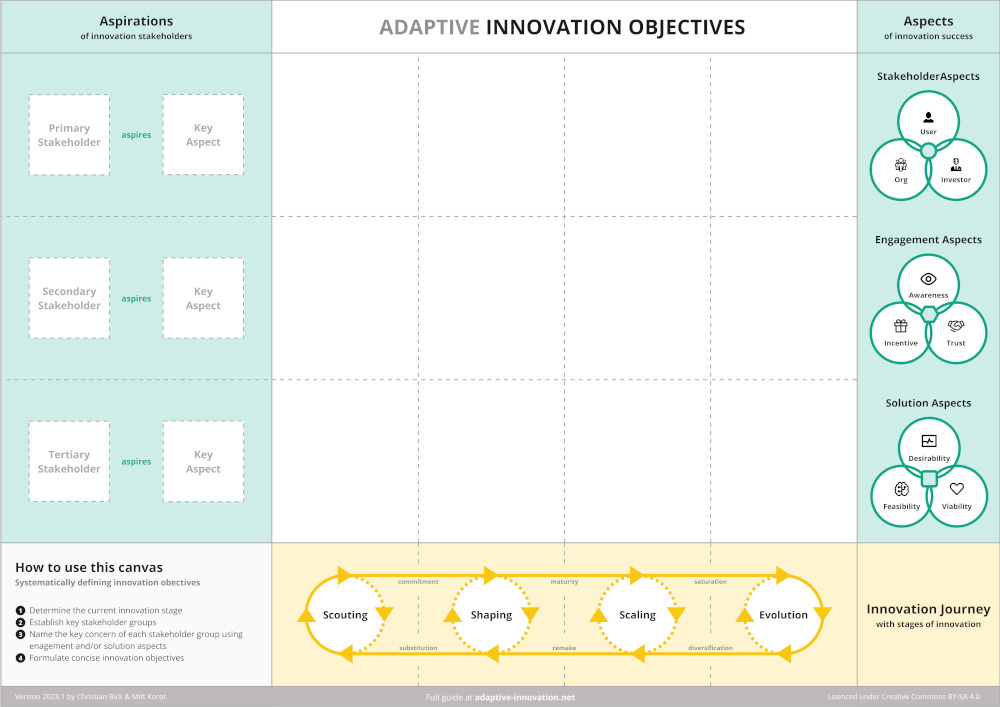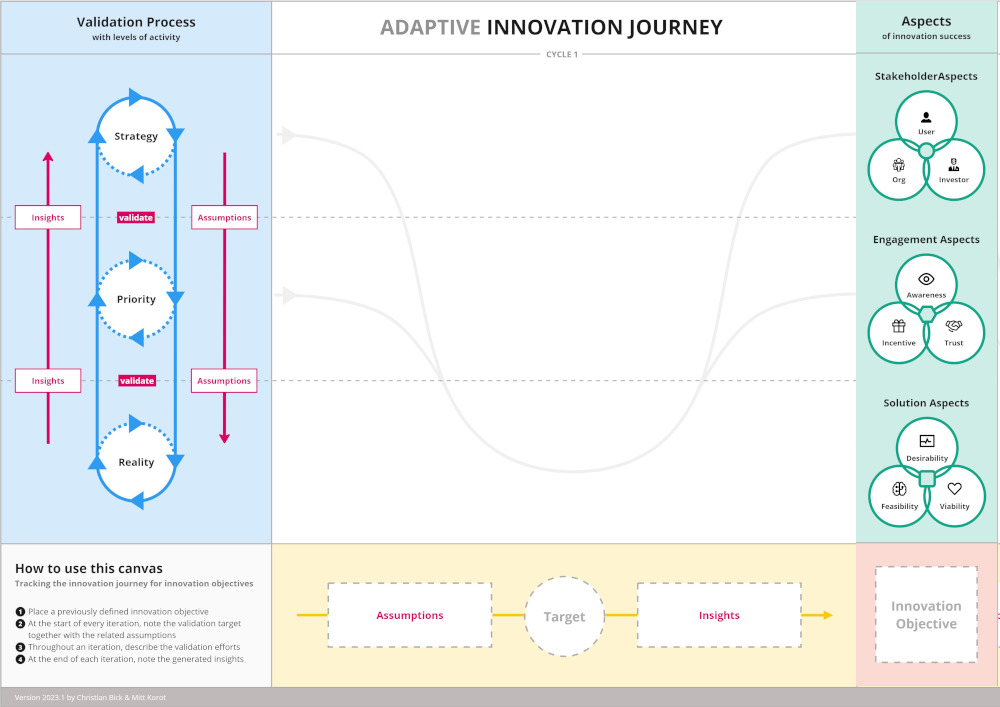Introduction
to adaptive innovation
A customized workshop format that starts from already established expertise and proven
practices.
1
Describing the innovation mindset
What were innovations that have changed our lives and during which key
moments did we feel proud
contributing to an innovation? Exploring the intrinsic nature to innovation alongside personal
experiences,
we can derive implications of traits and practices that foster innovation. Establishing a fundamental
innovation mindset, we are ready to start the journey.
2
Revisiting established methods
Every organization has established innovation practices that contribute
value. Revisiting these practices
and their limitations together, directly leads us to the gap in methodology that
Adaptive Innovation addresses and how, what has proven worthwhile in the past, is going to be
become even more useful in the context of Adaptive Innovation.
3
Introducing Base Principles
While other methods use domain specific concepts to describe what matters to
be a successful innovator,
Adaptive Innovation consolidates the identical core of all successful methods in one common approach
with one common language. Giving and outlook on how these principles come to life, the first steps
towards
action are already laid out.



